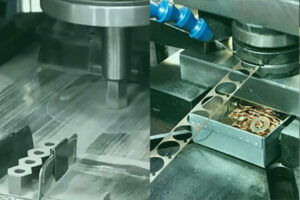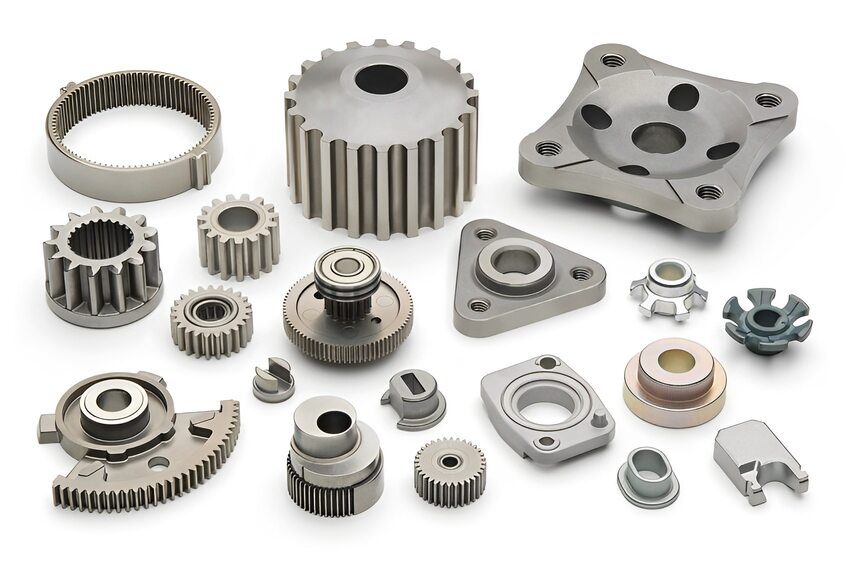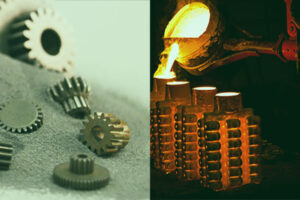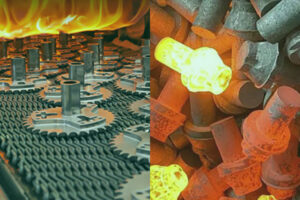
Powder Metallurgy VS. Stamping
Metal components can be manufactured using multiple techniques. Every technique has its pros and cons and a different method of processing. The decision of which
Metal components are used widely in many applications and are manufactured using different processes. Multiple industries rely on different components, so they need to be manufactured with accuracy.
Powder metallurgy and machining are two kinds of processes that are used for manufacturing these components. Every process involves different methods that might be suitable for one component or not for another.
In this blog, we will discuss the pros and cons of these processes and how they can be compared. So, let’s read below:
Powder metallurgy, as the name suggests, is a process that uses powdered metals to manufacture components.
The powdered metal is pressed in a die and then sintered in a furnace at a given temperature so that it turns into solid components.

Flexible Design Options: Powder metallurgy allows the manufacturing of all designs, even those with undercuts and internal cavities; hence, it offers to create complex shapes.
High Accuracy in Components: Powder metallurgy is a suitable process that helps create uniform components which require high accuracy and surface finishing.
Less Wastage: Powder metallurgy is efficient and doesn’t waste material.
Versatility: Powder metallurgy is a versatile process, and it can be used for creating components with different materials, which comprise carbon fibres, stainless steel, and many non-ferrous metals.
High Investment Cost: Powder metallurgy is expensive as its tools are quite costly. Hence it is only suitable for high-volume production.
Porosity: Powder metallurgy causes porosity on the components; additional processes may be needed to reduce it.
Limited Material Selection: Certain materials like exotic alloys or composite materials cannot be used in association with powder metallurgy; hence, such components cannot be manufactured using powder metallurgy.
The machining process means a workpiece is fixed in the machine, and the excess material is removed to chive the required shape. This technique of machining composes of drilling, milling, turning, and grinding.

Highly Precise Components: Machining is a suitable method for manufacturing parts with tight tolerance; hence, this process is suitable when high precious is needed.
Seamless Surface Finish: Machining is a process that offers excellent surface finishing, and this makes components ready to use with either no or very minimal finishing processes needed.
Material Selection: Material selection for the machining process is high, and various materials may be chosen for manufacturing components.
Versatility: Machining is a versatile process, and hence plastics, metals, and all kinds of materials may be used, and multiple shapes and styles can be manufactured.
Material Waste: Machining is a subtractive manufacturing process involving much material waste.
Limited Design Flexibility: Machining is unsuitable for components that comprise undercuts or have internal cavities; hence it can offer limited complexity in the components.
The two methods, powder metallurgy and machining have advantages and disadvantages, and the kind of process you may choose depends upon your application’s requirements.
Powder metallurgy offers benefits like utilizing the materials well and being flexible, whereas machining offers highly precise parts. So, depending on the production volume and required flexibility in design, you can select the process.

Metal components can be manufactured using multiple techniques. Every technique has its pros and cons and a different method of processing. The decision of which

Manufacturers tend to use casting when considering cost performance and higher product strength. However, it also has disadvantages, such as material waste. You may be

As widely recognized, powder metallurgy (PM) is an excellent way to quickly produce complex small parts. But for larger or stronger parts, which process is
More than 10,000 developed powder metallurgy products, including sintered gears, pulleys, impellers, sprockets, hubs, rotors, oil bushings, etc., Get free samples without a tooling fee before placing an order!
BLUE MACHINES is a leader in powder metallurgy manufacturing, providing a full set of powder metallurgy processes, from designing, tooling, compacting, sintering, sizing, and hardening to the final finished products.
Find your sintered parts in our shop without tooling fees.
Email: [email protected]
Copyright © 2024 NINGBO BLUE MACHINES CO., LTD. | All Rights Reserved.